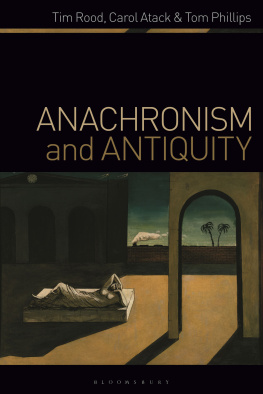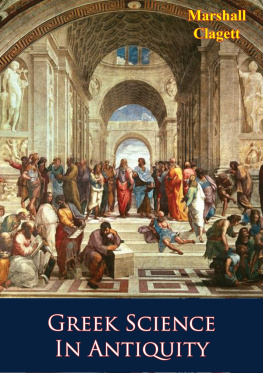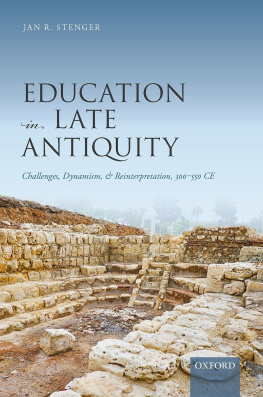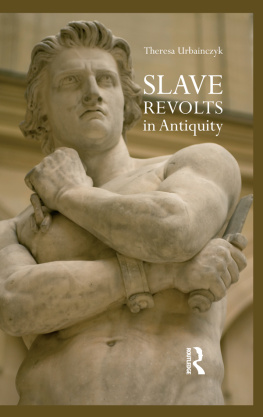Rood Tim - Anachronism and Antiquity
Here you can read online Rood Tim - Anachronism and Antiquity full text of the book (entire story) in english for free. Download pdf and epub, get meaning, cover and reviews about this ebook. year: 2019, publisher: Bloomsbury Publishing Plc, genre: Home and family. Description of the work, (preface) as well as reviews are available. Best literature library LitArk.com created for fans of good reading and offers a wide selection of genres:
Romance novel
Science fiction
Adventure
Detective
Science
History
Home and family
Prose
Art
Politics
Computer
Non-fiction
Religion
Business
Children
Humor
Choose a favorite category and find really read worthwhile books. Enjoy immersion in the world of imagination, feel the emotions of the characters or learn something new for yourself, make an fascinating discovery.
- Book:Anachronism and Antiquity
- Author:
- Publisher:Bloomsbury Publishing Plc
- Genre:
- Year:2019
- Rating:3 / 5
- Favourites:Add to favourites
- Your mark:
- 60
- 1
- 2
- 3
- 4
- 5
Anachronism and Antiquity: summary, description and annotation
We offer to read an annotation, description, summary or preface (depends on what the author of the book "Anachronism and Antiquity" wrote himself). If you haven't found the necessary information about the book — write in the comments, we will try to find it.
Anachronism and Antiquity — read online for free the complete book (whole text) full work
Below is the text of the book, divided by pages. System saving the place of the last page read, allows you to conveniently read the book "Anachronism and Antiquity" online for free, without having to search again every time where you left off. Put a bookmark, and you can go to the page where you finished reading at any time.
Font size:
Interval:
Bookmark:

Also Available from Bloomsbury
Anticipation and Anachrony in Statius Thebaid, Robert Simms
Antiquity and the Meanings of Time, Duncan F. Kennedy

Gaspar van den Hoecke, Croesus showing his Treasures
Letter of Aphrodite (papyrus)
Albrecht Altdorfer, Alexanderschlacht
Paris leading Helen away: red-figure skyphos attributed to the Makron painter
Page from manuscript of Jeromes version of Eusebius Chronicle
The Parian Marble, detail
The Parian Marble, detail
Panathenaic Amphora, attributed to the Marsyas Painter
Togatus Barberini
Giorgio de Chirico, The Soothsayers Recompense
Ajax preparing suicide: black-figure amphora attributed to Exekias
Hoplites riding on dolphins: red-figure psykter attributed to Oltos
Raphael, School of Athens
Raphael, Parnassus
James Barry, Crowning the Victors at Olympia, detail
James Barry, Crowning the Victors at Olympia, detail
James Barry, Crowning the Victors at Olympia, detail
James Barry, Elysium, detail
This book is a study both of anachronism in antiquity and of anachronism as a vehicle for understanding antiquity. We have tried to make it accessible to readers outside Classics with an interest in the history of temporality: we offer translations of all Greek and Latin (sometimes with small borrowings from published versions), and have offered guidance for further reading in the notes rather than exhaustive documentation of secondary literature. Published translations of post-classical works have sometimes been adapted.
The writing of this book was supported by the Leverhulme Trust Research Project Grant Anachronism and Antiquity (October 2016September 2019: https://anachronismandantiquity.wordpress.com/), for which Tim Rood (TR) was Principal Investigator and Carol Atack (CA) and Tom Phillips (TP) Post-doctoral Research Associates; CA and TP are in addition preparing separate monographs for the project (on Plato and Apollonius respectively). Mathura Umachandran joined the project in September 2018 and provided intellectual energy and keen critical comments: the book owes a great deal to her involvement. John Marincola and Scarlett Kingsley were involved in preparing the Leverhulme application and supported the project throughout. Prior to the application, TR presented a collection of material on ancient anachronism and the history of anachronism at an exploratory workshop he organized in September 2015 with support from the Radcliffe Institute for Advanced Study at Harvard University; papers were also given at the workshop by Kate Gilhuly, Larry Kim, Scarlett Kingsley, Paul Kosmin, John Marincola, Francesca Schironi, Valeria Sergueenkova, Barnaby Taylor and Emma Teng, all of whom made it a very fertile occasion. John Marincola in addition secured funding for a stimulating conference on anachronism at Florida State University in March 2018, where CA, TP, Emily Greenwood, Constanze Gthenke, Brooke Holmes, Scarlett Kingsley, Ellen OGorman, Mark Payne and Barnaby Taylor gave papers (six of which form a special issue of Classical Receptions Journal). We must express gratitude, too, to the projects Steering Committee (Catherine Darbo-Peschanski, Emma Dench, Ja Elsner, Constanze Gthenke, Nicholas Purcell and Kostas Vlassopoulos) and to the editorial team at Bloomsbury, Alice Wright and Lily Mac Mahon. The Muse Communale, Boulogne-sur-Mer, and the Bancroft Library, University of California, Berkeley, kindly offered free use of images; the cost of other images was supported by the Jowett Copyright Trust.
All three authors share a connection with St Hughs College, Oxford: TR as Fellow in Classics; CA first as Lecturer, then as Junior Research Fellow and Tutor for Equality; TP as alumnus. The colleges staff (academic and non-academic), students, buildings, libraries, gardens and food make it a wonderful place to work and breathe: we would like to offer this book to all those whose dedication helps to make it so.
| DK | H. Diels and W. Kranz, eds, Die Fragmente der Vorsokratiker, 6th edn, Berlin, 1951. |
| FGrH | F. Jacoby, ed., Die Fragmente der griechischen Historiker, Berlin and Leiden, 192358. |
| FGrH Cont. | G. Schepens and S. Schorn, eds, Die Fragmente der griechischen Historiker continued, Leiden, 1998. |
| FRHist | T.J. Cornell, ed., The Fragments of the Roman Historians, Oxford, 2013. |
| OGIS | W. Dittenberger, ed., Orientis graecae inscriptiones selectae, Leipzig, 19035. |
| SSR | G. Giannantoni, ed., Socratis et Socraticorum reliquiae, Naples, 1990. |
| TrGF | B. Snell, R. Kannicht and S. Radt, eds, Tragicorum Graecorum fragmenta, Gttingen, 19712004. |
Towards the start of his Histories (probably completed in the 420s BC ), Herodotus of Halicarnassus tells of an encounter between the famously wealthy Lydian king Croesus and Solon, an Athenian poet and political leader (1.2933). After taking Solon on a tour of the extensive treasuries in his capital Sardis, Croesus expectantly asks Solon who he regards as the most fortunate of mortals. Solon responds by praising an Athenian, Tellus, who had two adult sons, possessed enough wealth for a comfortable life, and finally died fighting for his city near Eleusis. When the incredulous Croesus proceeds to ask who was second most fortunate, Solon tells another story. Two strong youths, Cleobis and Biton, took up the yoke of their mothers cart and carried her to a festival of Hera. As all the other women admired the two young men, their mother prayed to the goddess to give them the best possible reward. They at once lay down in Heras sanctuary and died in their sleep the goddess showing, Solon explains, that it is better for humans to be dead than alive. Solon then explains to the now irate Croesus that any single day in the course of a human life may bring disaster and that before judging whether someone is blessed one must look to the end of every affair, to see how it turns out (1.32.9) (Fig. 1).
Whether one views it as puerile (

A similar lack of temporal consciousness seems to be shown by the joint appearance of Solon and Croesus in the dialogue
Many modern historians, as we shall see in Chapter 2, posit that the sort of historical sense apparently lacking in Herodotus and Lucian was central to the formation of the Renaissance. This sense of difference is generally illustrated by alleged contrasts between medieval and Renaissance art. While medieval artists are thought to have been happy to show figures from classical antiquity in the guise of chivalrous knights, Renaissance artists seem to show a much greater sense of temporal perspective (perhaps in keeping with their greater sense of spatial perspective). The unearthing of new pieces of Roman sculpture and of fragments of ancient buildings led to a stronger interest in both the artistic styles and the historical realia of antiquity, and artists began to pay greater attention to precise architectural details and to nuances of clothing and hair style, all of which were at the same time subject to antiquarian curiosity. Grouped with artists and antiquarians in the typical story of the discovery of historical difference are philologists such as Lorenzo Valla (140757), whose proof that the Donation of Constantine (a document supposedly of the fourth century AD which gave the Pope authority over the western part of the Roman empire) was a forgery is often hailed as a key intellectual advance.
Next pageFont size:
Interval:
Bookmark:
Similar books «Anachronism and Antiquity»
Look at similar books to Anachronism and Antiquity. We have selected literature similar in name and meaning in the hope of providing readers with more options to find new, interesting, not yet read works.
Discussion, reviews of the book Anachronism and Antiquity and just readers' own opinions. Leave your comments, write what you think about the work, its meaning or the main characters. Specify what exactly you liked and what you didn't like, and why you think so.









